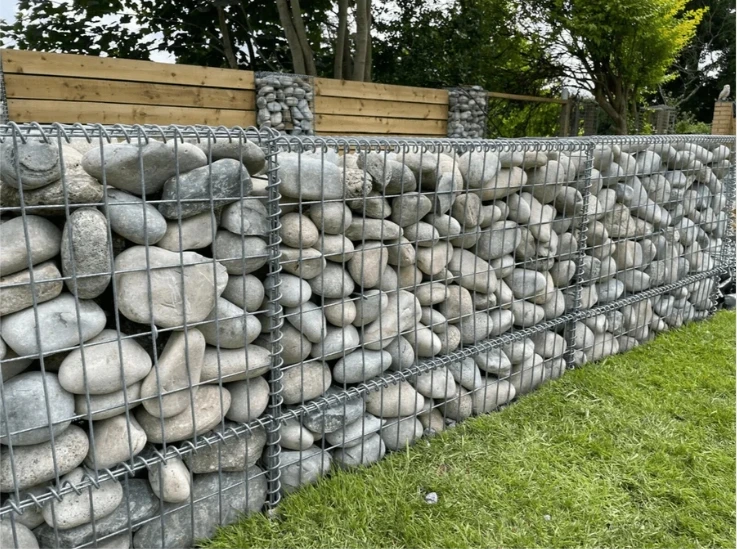Nov . 29, 2024 17:47 Back to list
Welded Wire Mesh Dimensions for Concrete Applications and Their Benefits
Understanding Welded Wire Mesh Sizes for Concrete Applications
Welded wire mesh, also referred to as welded wire fabric (WWF), has become a fundamental element in reinforced concrete construction. It consists of intersecting wire strands that are welded together at regular intervals, forming a grid-like structure. This type of mesh provides a vital framework to enhance the tensile strength and overall integrity of concrete, reducing the risk of cracking and ensuring durability. Understanding the various sizes and specifications of welded wire mesh is crucial for engineers, builders, and DIY enthusiasts alike, as it directly impacts the overall performance of concrete structures.
The Importance of Welded Wire Mesh in Concrete
Concrete is strong under compression but weak under tension. Thus, when a concrete structure experiences tensile forces—such as bending due to loads—it can develop cracks. Welded wire mesh addresses this issue by providing a reinforcement that distributes tensile stresses throughout the concrete slab. By incorporating mesh, builders enhance the structural capabilities of concrete pavements, walls, driveways, and even slabs used in residential and commercial buildings.
Common Sizes and Variants of Welded Wire Mesh
Welded wire mesh comes in various sizes and configurations, typically identified by the diameter of the wires and the spacing between them. Common wire diameters include 10, 12, 14, and 16 gauge, with smaller numbers indicating thicker wire.
1. Wire Diameter - 10 gauge (0.1020 inches or 2.588 mm) This is one of the thicker options, providing substantial strength and is often used in applications that bear significant loads, such as industrial floors and heavy-duty pavements. - 12 gauge (0.0800 inches or 2.032 mm) A versatile choice, widely used in residential foundations and light commercial work. - 14 gauge (0.0641 inches or 1.628 mm) A common choice for a variety of applications, including driveways and patios. - 16 gauge (0.0566 inches or 1.432 mm) This is thinner and typically used in less demanding applications, such as lightweight concrete slabs.
welded wire mesh sizes for concrete

2. Spacing of Welds The spacing between the wires also greatly affects the performance of welded wire mesh. Common spacing configurations include - 2” x 2” Appropriate for lighter loads, ideal for residential slabs. - 4” x 4” Commonly used in both residential and commercial applications, striking a balance between strength and weight.
Selecting the Right Mesh for Your Project
Choosing the right welded wire mesh depends on several factors - Load requirements Load-bearing capacity is critical. Thicker wires (lower gauge numbers) and closer spacing are necessary for high loads and dynamic loads. - Concrete thickness The thickness of the concrete slab informs the size and type of mesh required; thicker slabs may need more robust reinforcement. - Environmental conditions Conditions such as soil movement, exposure to chemicals, and climate can influence the choice of wire mesh.
Installation Considerations
Proper installation of welded wire mesh is as important as selecting the right type. Mesh should be placed in the upper portion of the concrete slab, typically 1 to 2 inches from the surface, to maximize its tensile benefits. It’s essential to ensure that the mesh is adequately supported to prevent it from settling into the lower section of the concrete during the pour.
Conclusion
In summary, welded wire mesh is an invaluable asset in the field of concrete construction. By offering excellent tensile support, it plays a crucial role in enhancing the durability and strength of concrete structures. Understanding the sizes and specifications of welded wire mesh, including wire diameter and spacing, is essential for making informed decisions that will benefit the longevity of construction projects. When implemented correctly, welded wire mesh significantly contributes to the safety, resilience, and efficiency of concrete applications, making it a staple in contemporary construction practices. As you embark on your next construction project, take the time to consider the best options for welded wire mesh to ensure optimal performance and structural integrity.
-
Reinforcing Mesh: Core Material of the Construction Industry
NewsJul.07,2025
-
Welded Wire Fabric Reinvented for Modern Projects
NewsJul.04,2025
-
Superiority of Stainless Steel Woven Mesh
NewsJul.04,2025
-
Key Types of Razor Wire and Their Applications
NewsJul.04,2025
-
Durable Metal Fence Types for Security
NewsJul.04,2025
-
Best Materials for Livestock Fence
NewsJul.04,2025
products.







